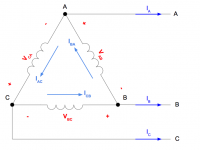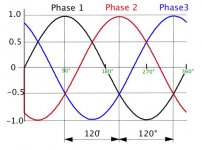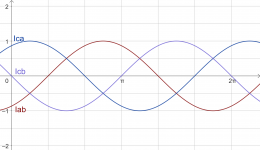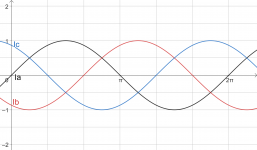Grouch
Senior Member
- Location
- New York, NY
Say you have a 3 phase delta configuration on the primary of a transformer. How does the current flow through the phase coils as the AC current on the feeder flips back and forth in direction?
I understand that at any instantaneous time on the feeder, current flows towards the delta wiring on two of the phase wires, while returning on the 3rd phase wire, and this constantly changes... you can see it on a 3 phase sine wave diagram.
How does this affect the current flow through the delta connection? Does the current flow in one direction, counterclockwise, and then the other direction, clockwise? I can't find anything on Google.
I understand that at any instantaneous time on the feeder, current flows towards the delta wiring on two of the phase wires, while returning on the 3rd phase wire, and this constantly changes... you can see it on a 3 phase sine wave diagram.
How does this affect the current flow through the delta connection? Does the current flow in one direction, counterclockwise, and then the other direction, clockwise? I can't find anything on Google.





